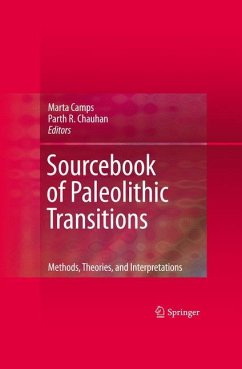
Egypt During the Last Interglacial
The Middle Paleolithic of Bir Tarfawi and Bir Sahara East
Versandkostenfrei!
Versandfertig in 6-10 Tagen
152,99 €
inkl. MwSt.
Weitere Ausgaben:

PAYBACK Punkte
76 °P sammeln!
by Fred Wendorf, Romuald Schild and Angela E. Close INTRODUCTION roughly contemporaneous with the later part of Isotope Stage 7; most sites occur in sediments dated between 100 The Middle Paleolithic is potentially one of the most and 130 ka and fall early in the Last Interglacial; the most interesting periods in human history. It marks a major recent Middle Paleolithic site dates between 70 and 80 ka. at break from the long period of the Lower Paleolithic when the end of the Last Interglacial. there was essentially no change for several hundreds of thousands of years, and it was during the Mi...
by Fred Wendorf, Romuald Schild and Angela E. Close INTRODUCTION roughly contemporaneous with the later part of Isotope Stage 7; most sites occur in sediments dated between 100 The Middle Paleolithic is potentially one of the most and 130 ka and fall early in the Last Interglacial; the most interesting periods in human history. It marks a major recent Middle Paleolithic site dates between 70 and 80 ka. at break from the long period of the Lower Paleolithic when the end of the Last Interglacial. there was essentially no change for several hundreds of thousands of years, and it was during the Middle THE MODERN ENVIRONMENT Paleolithic, and probably early in that stage, that the The two depressions of Bir Tarfawi and Bir Sahara East are modem form of human being first appeared in Africa (Stringer and Andrews 1988). We do not know whether the near the center of the southern Libyan Desert. They are earliest modem Africans behaved differently from Middle about 350 km southwest of KhargaOasis, and the same Paleolithic people elsewhere in the world and of different distance west and slightly north of Abu Simbel, at 22°55'N, physical types, but we should find out. A study of human 28°45'E.














